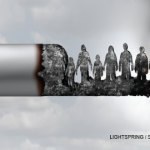(Reuters Health)—Age-adjusted hip fracture incidence has declined in the U.S. over the past four decades, aided by a decline in smoking and alcohol consumption, a new study suggests.
Researchers examined data on 4,918 men and 5,634 women who participated in the prospective Framingham Heart Study from 1970 to 2010. Overall, the age-adjusted incidence of hip fractures declined by 4.4% per year during the study period, and the annual decrease was significant for both men (5.2%) and women (4.5%).
Although some risk factors for hip fractures were little changed, two prominent risk factors—smoking and drinking alcohol—became much less prevalent over time. Smoking prevalence decreased from a peak of 38% from 1971 to 1975 to 15% in the final five-year period of the study. Heavy drinking prevalence declined from 7.0% to 4.5% during the study.
“We knew that, accounting for the aging population, the incidence of hip fractures is going down in the U.S. and in other developed countries, but we really didn’t know why,” says senior study author Timothy Bhattacharyya, MD, of the National Institute for Arthritis and Musculoskeletal and Skin Diseases, Bethesda, Md.
“Our study concludes that people cutting down on smoking and heavy drinking was a major contributor to the decline,” Dr. Bhattacharyya says by email.
Heavy drinking was closely associated with smoking, researchers report in JAMA Internal Medicine. More than half of the total person-years for heavy drinking (50.9%) were also smoking person-years.1
When researchers limited their analysis only to people who were not heavy drinkers, age-adjusted hip fracture incidence decreased by 4.8%.
But when researchers calculated hip fracture incidence over time only for smokers, the decrease they found (1.7%) wasn’t statistically significant.
Researchers also looked separately at the impact of bisphosphonates on hip fracture incidence. They calculated that in a best-case scenario, an 8.5% rate of bisphosphonate use starting in 1995 might have potentially cut hip fracture incidence by 4.8% in total, far less than the total decrease observed in the study of 67%.
Although these medicines are still beneficial, the study authors conclude that smoking cessation—and not bisphosphonates—has been the biggest driver of declining hip fracture incidence.
One limitation of the study is that Framingham Heart Study participants aren’t representative of the U.S. population as a whole, with a mostly white population and lower obesity rates than the country as a whole, Dr. Bhattacharyya says.
Even so, the results underscore that hip fractures can be prevented, along with the disability and mortality that often accompanies these injuries, says Elizabeth Regan, MD, PhD, of National Jewish Health, Denver, and the Colorado School of Public Health.

